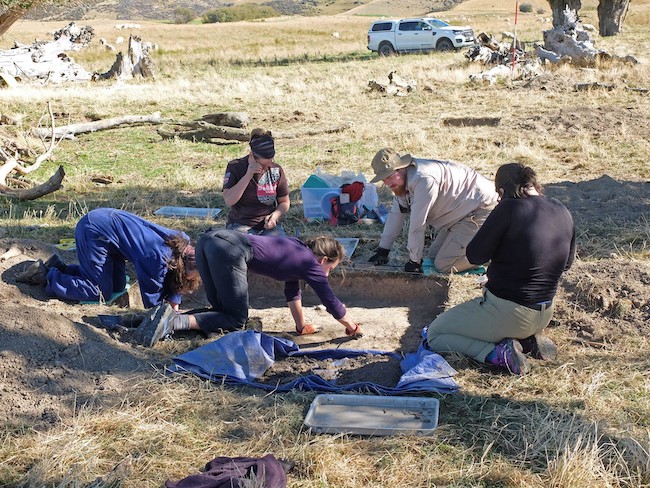
Growing up in Europe, a continent full of history and culture, has opened my eyes to the fascinating world our ancestors lived in, and how the past has shaped our world today. It is this fascination and passion that has brought me to my research today; using genetic technologies to study past populations, with a focus on the infectious diseases these people were infected with.
My journey hasn't been a straight line, but it has been relatively smooth. I started with a Bachelor of Science in Forensic Science in The Netherlands as I've always loved the life sciences. During this degree I got the opportunity to do an internship at Wildbase Pathology, Massey University in NZ, where I worked alongside a Wildlife pathologist to determine the cause of death of our precious native NZ wildlife (best decision in my life so far!). After this, I basically never left the country…

I got a Summer Scholarship at Massey University to do some genetic work on urchin species across NZ and the wider Pacific, and that's when I knew what I wanted to do for a career; become a geneticist. I was very lucky that someone wanted to hire me as a genetics lab technician straight after I finished my Summer Project. At this point in time, I had very little experience, but he loved my enthusiasm! During my role as a lab technician I realized that I wanted to do more than just lab work; I wanted to be able to analyse the data I was producing in the lab, a field also known as bioinformatics (in which we use computer science to analyse complex genetic data).
The next step was to go get a Masters degree, and for that I chose the University of Otago. As my personal interests in history and archaeology had grown over the years, I decided to do a Graduate Diploma first, to expand my knowledge in these areas. One of my favourite papers was Biological Anthropology (BIOA301), where I learned more about the methods used to analyse human skeletal remains, including the applications of ancient DNA technologies. During these lectures, I felt that all my interests came together into one. Soon after, I contacted the Biological Anthropology Group of the Anatomy department and we came up with a plan for a Summer Project and a Masters Project.
So far, my work in the Anatomy Department has been concerned with the detection and analysis of pathogens that affected humans hundreds to thousands of years ago, through the use of ancient DNA technologies. In other words, I extract the DNA from skeletal remains (bones and teeth) and use bioinformatic tools to look for DNA sequences that belong to organisms that cause infectious diseases, such as Mycobacterium tuberculosis and Treponema pallidum (Syphilis). With this information we can reconstruct the evolutionary history of these pathogens, which is fundamental to fully understand human-pathogen interactions. Being a postgrad student in the Anatomy Department has been an incredibly valuable and enjoyable experience - so much that I'm planning to do my PhD here as well!
